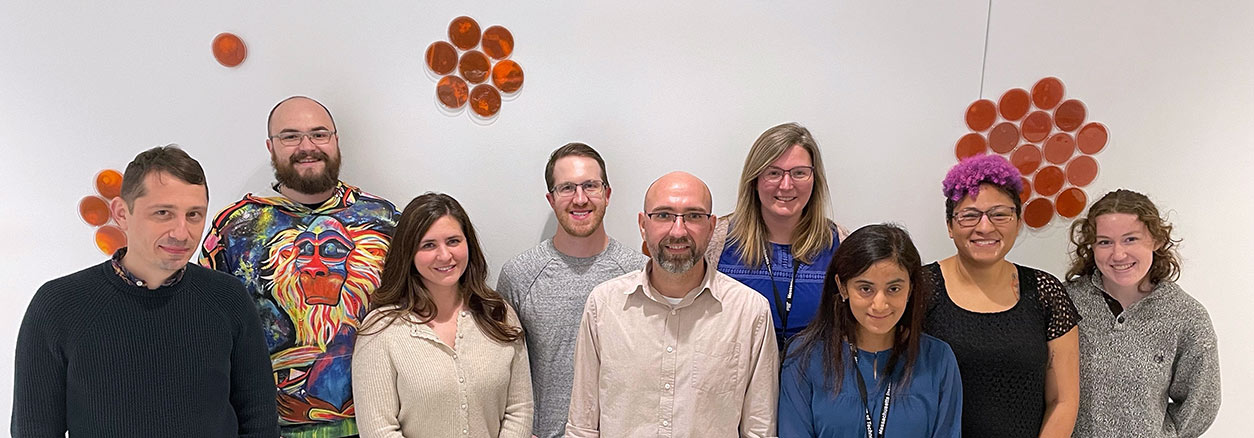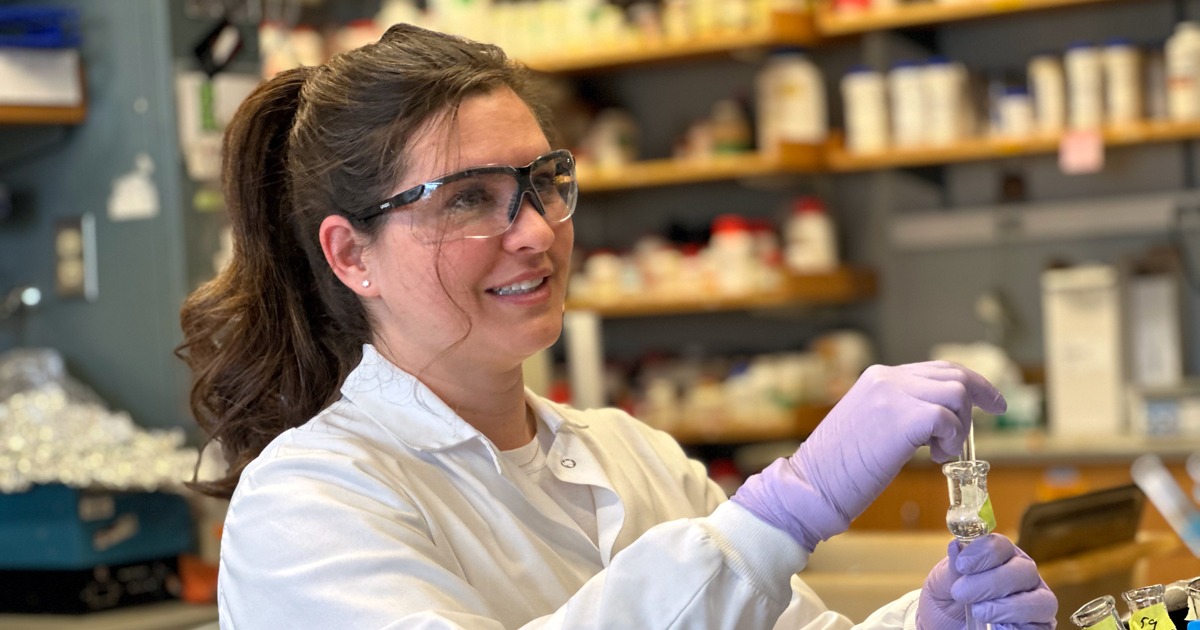Environmental contaminants like n-nitrosodimethylamine (NDMA) leave distinct mutation patterns in DNA, according to Amanda Armijo, D.V.M., Ph.D. The NIEHS Superfund Research Program (SRP) trainee presented her research on the genetic effects of NDMA at the August 2 Karen Wetterhahn Memorial Award Lecture.
NDMA is a probable carcinogen that was once used to produce rocket fuel. In Wilmington, Massachusetts, improper chemical waste storage at the Olin Chemical Superfund site caused 20 million gallons of NDMA to leach into the town’s groundwater.
“NDMA can easily mix into water but is not easily removed by some common filtration systems,” said Armijo. “We want to know the mechanisms behind the chemical’s carcinogenic effects, and how we can protect people from them.”
Observing NDMA’s sawtooth
NDMA is transformed by the liver into a reactive ion that can alter the bases that make up DNA. Normally, each type of base — adenine (A), cytosine (C), guanine (G), and thymine (T) — pairs together with another specific base to connect two strands of DNA, but NDMA exposure can cause these bases to pair up incorrectly. These mutations can increase the risk of cancer.
Armijo hypothesized that environmental toxicants like NDMA might leave a specific mutational pattern on DNA. If this mutational pattern exists, scientists could see if a person had been exposed to NDMA before they experienced adverse health effects.
“We thought that the chemical might favor changing bases in some places on the DNA over others, or that repair enzymes might favor repairs in some contexts over others,” explained Armijo.
To test this, she conducted studies in mice and discovered that NDMA-treated mice had a distinctive pattern of mutations in DNA in their lung and liver tissues.
“We found that the type and number of mutations created a jagged sawtooth pattern,” said Armijo. “So, if we find this mutational pattern in a person’s DNA, we may be able to predict if they are at increased risk for cancer due to NDMA exposure.”

DNA repair enzymes may protect to an extent
Armijo also wanted to know how certain enzymes that recognize and repair DNA damage can alter the effects NDMA has on human health. Normally, DNA repair enzymes like O6-methylguanine-DNA methyltransferase (MGMT) or alkyladenine DNA glycosylase (AAG) fix some DNA mutations before they can cause disease. Armijo hypothesized that people with higher levels of these enzymes might be protected against NDMA’s effects.
She conducted studies in mice and found that mice without MGMT and mice without AAG had more mutations after exposure to NDMA compared to mice with both enzymes. Mice with overexpressed AAG showed a decrease in NDMA mutations, but they also had higher rates of cell death than the other mice.
“It’s a bit of a conundrum because AAG seems to protect DNA against the effects of NDMA, but too much is toxic to cells,” said Armijo. “It’s a delicate balance to have AAG levels that maximize protectiveness but minimize cell death.”
Armijo plans to do more work on NDMA in the future. In particular, she is looking at how exposure to different levels of the chemical affect DNA repair, and how NDMA might affect the immune system.
“NDMA is found in over 20 different Superfund sites, and most people are exposed at low doses over a long period of time,” said Armijo. “There’s so much we still need to know about how NDMA affects the body, and what levels are considered safe in our drinking water.”
(Michelle Zhao is a science writer and Cassidy Rice is a research and communications specialist for MDB, Inc., a contractor for the NIEHS Division of Extramural Research and Training.)
Source link
factor.niehs.nih.gov

